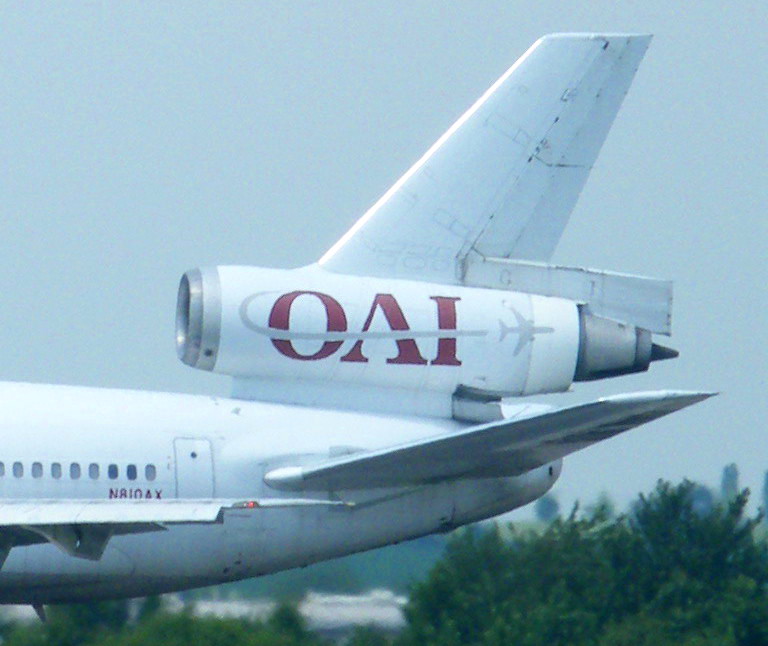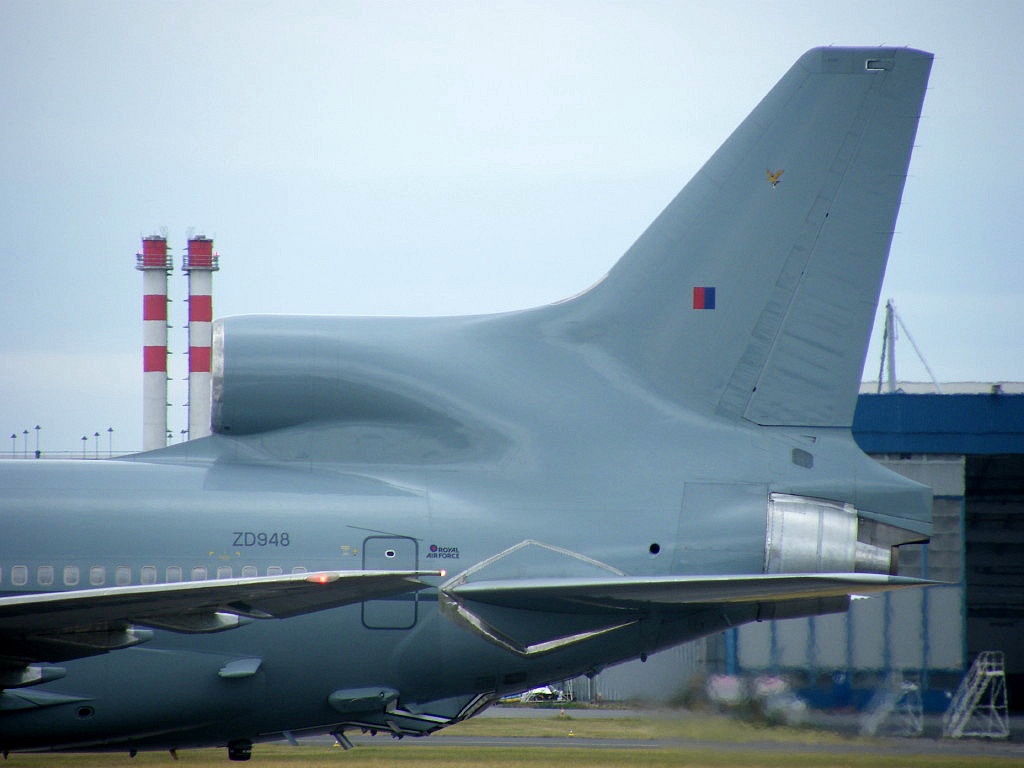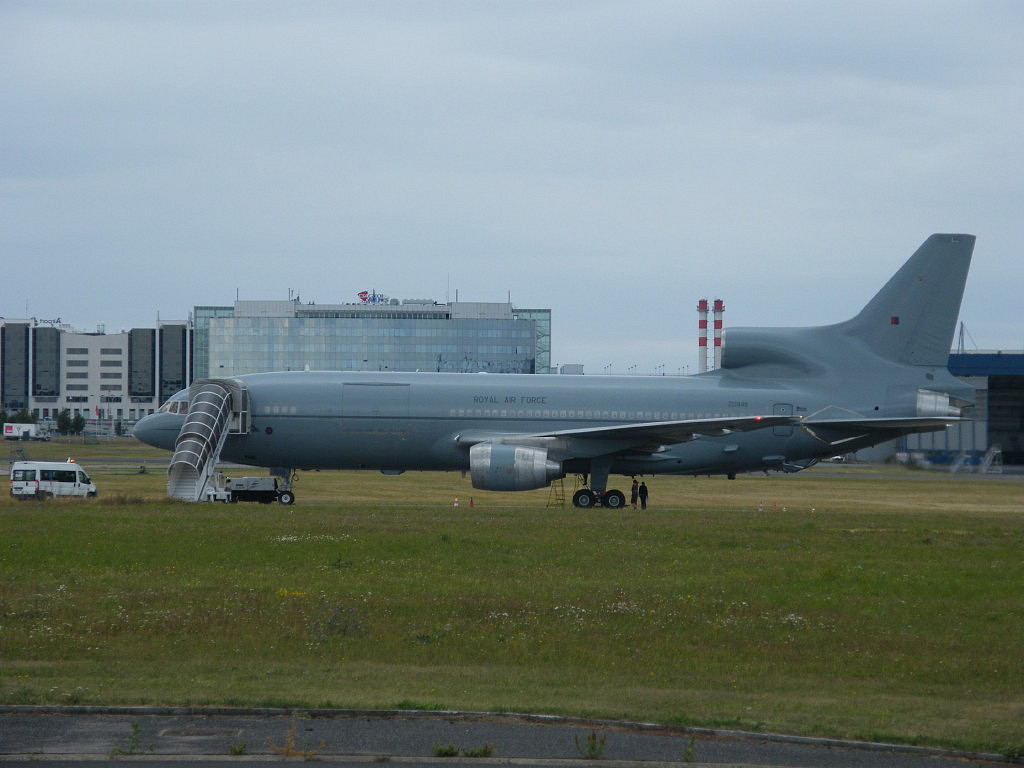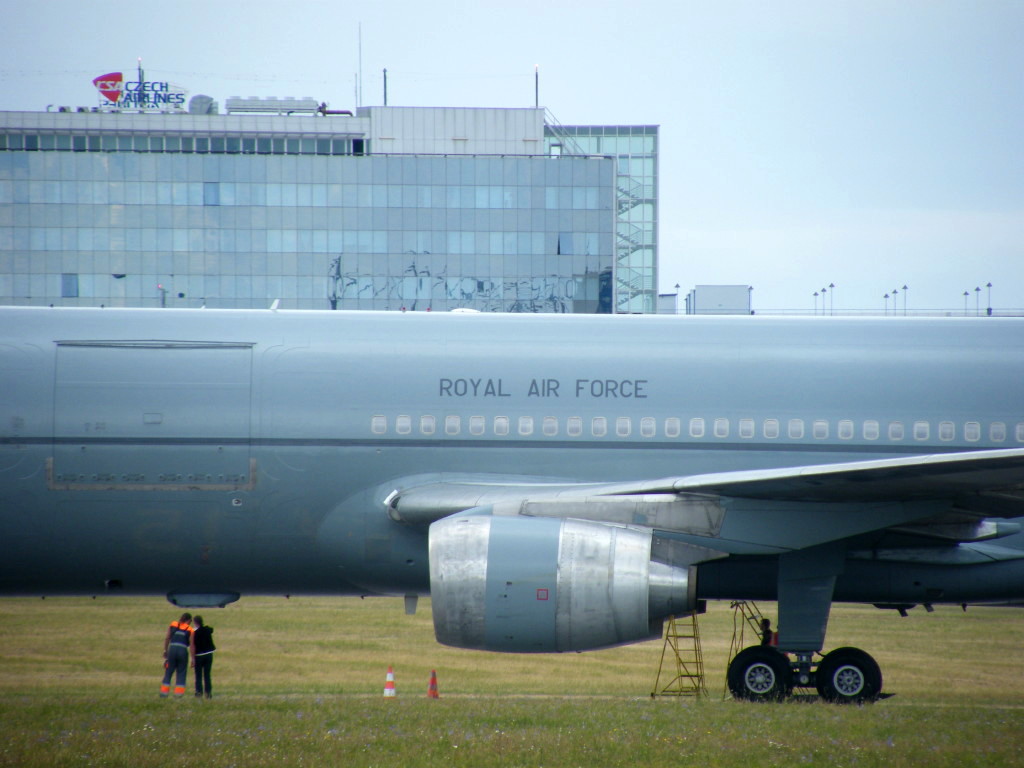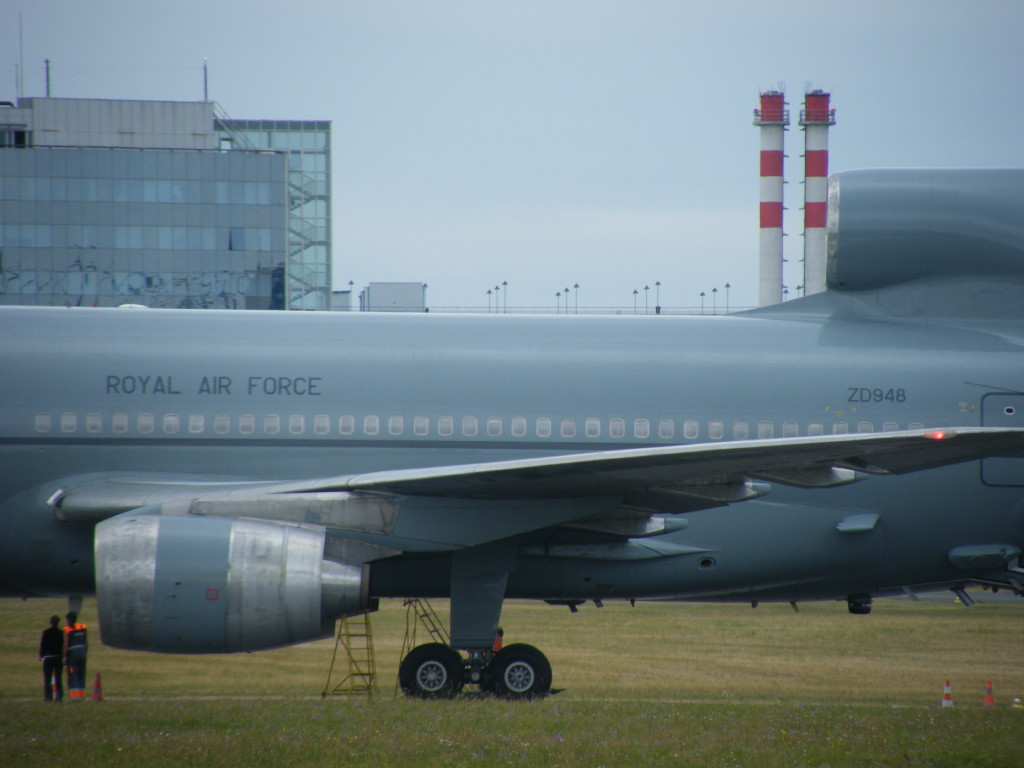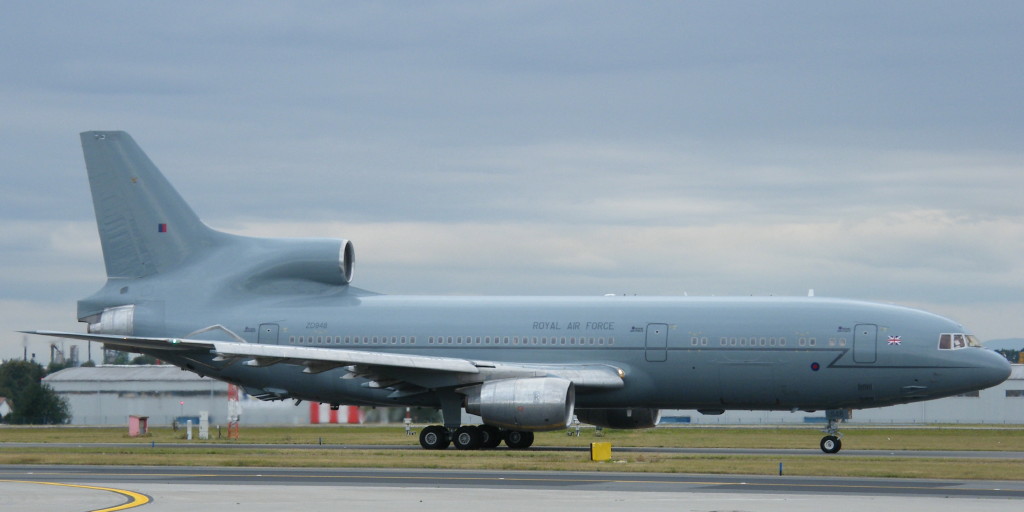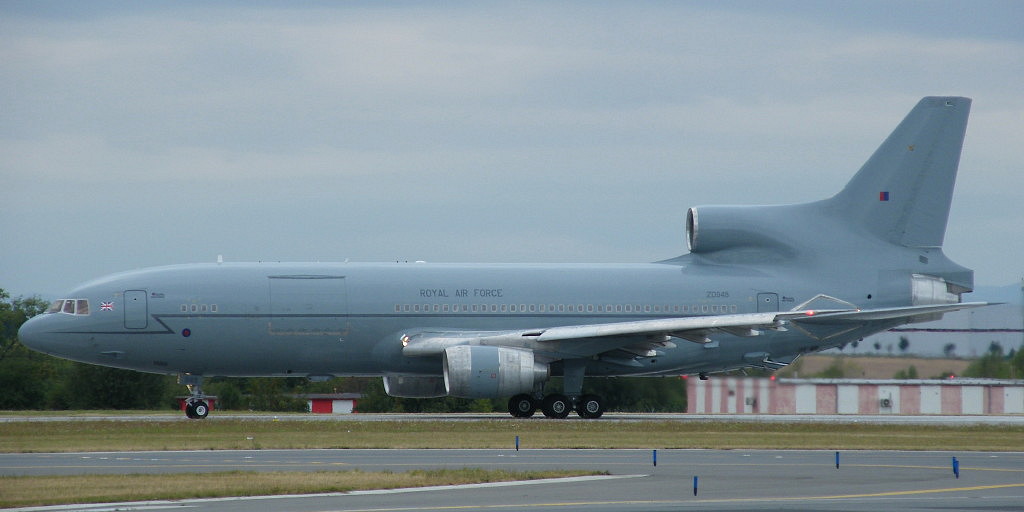Lockheed TriStar visited PRG after almost 5 years on Sunday Sep 6th,2009.
Previous visit in Dec 2004, Int'l Air Service A8-AAA. This time in Royal Air Force service on a training flight. Parts of Tails to compare: Left one DC-10, Right one L1011 TriStar. (Foto: Petr Liška)
Lockheed developed TriStar at the end of the 60s at the same time as competing DC-10. Both aircraft were developed according to specifications given by one of the US major airlines: American Airlines.
McDonnell Douglas placed the third engine at rear above fuselage in order to have straight intake tube. This solution resulted in heavier installation, as engine had to be very tightly connected to the fuselage and tail structure above engine nacelle was complicated.
Lockheed came to a result, that loss of speed of intake air in S-shaped duct is marginal compared with much easier installation of the rear engine: It pushes the fuselage, so that there is no danger of engine separation. And tail structure is simpler and more aerodynamic and MUCH MORE ELEGANT than DC-10's shape of rear engine/tail structure.
Lockheed development was well ahead of McDonnell Douglas. Lockheed planned to install Rolls Royce engines, but then Rolls Royce company went bankrupt and Lockheed during development had to look for another (US) engine maker and develop aircraft/engine combination from very start again. British Government saved Rolls Royce by nationalising it, so that later Lockheed returned to Rolls Royce as the sole supplier of engines for TriStar. But many months were lost, so that first flight of TriStar was made almost 3 months after DC-10.
Some US major airlines, incl. American AL, in the meantime decided definitively to order existing DC-10 than TriStar with unsure future.
This caused that only 250 TriStars of all versions were built....
During Falkland war RAF came to know, that it has no capability to transport large amount of soldiers and military equipment overseas. So that starting in 1983 RAF bought 6 long-range TriStars verswion -500 from Brfitish Airways and 3 from PAN AM. Then they were reconstructed by Marshall of Cambridge to RAF specifications either to tanker or cargo version or combined version tanker/cargo:
large cargo door, large fuel tanks in original underfloor cargo hold, strengthened main deck floor, refuelling pod at lower rear fuselage, installation of military avionics etc.
Lockheed L-1011-385-3 TriStarKC Mk1 registered "ZD948" is the first long-range series -500 built by Lockheed. Version -500 with its length of 50,05 m is 4,11 m shorter than standard TriStar. This aircraft, cn 1157, made its first flight on 16 Oct 1978 as "N48354" and remained with Lockheed for 18 months, when on 13 Apr 1980 was handed over to British Airways as G-BFCA "The Princess Margret Rose". Later built TriStar -500s entered commercial service much earlier: the third built was handed over to BA just three weeks after its first flight on 8Apr1979 - delivered 29 Apr 1979.
On 29 Mar 1983 RAF bought TriStar -500 cn 1157 from BA and after reconstruction my Marshall of Cambridge it was taken into service with RAF as "ZD948" in January 1985.
|
Lockheed L1011 TriStar KC Mk1 RAF ZD948. (Foto: Petr Liška) |
|
Lockheed L1011 TriStar KC Mk1 RAF ZD948. Left: Cargo door. Center: Engine RollsRoyce. |
|
Lockheed L1011 TriStar KC Mk1 RAF ZD948. (Foto: Petr Liška) |
|
Smooth curves - Lockheed L1011 TriStar KC Mk1 RAF ZD948. (Foto: Petr Liška) |
Author — Petr Liška — (september 2009)
